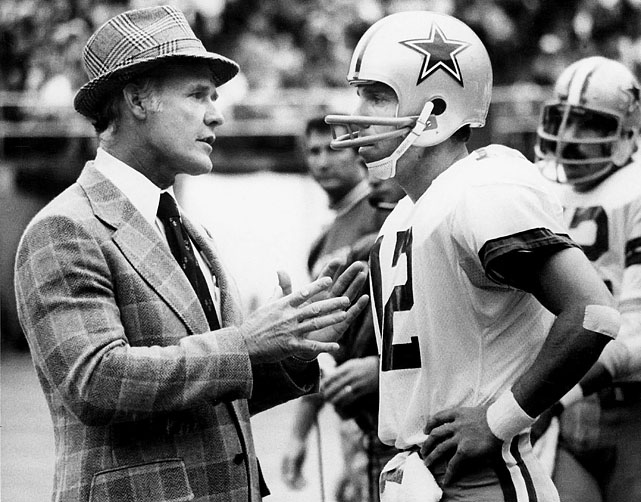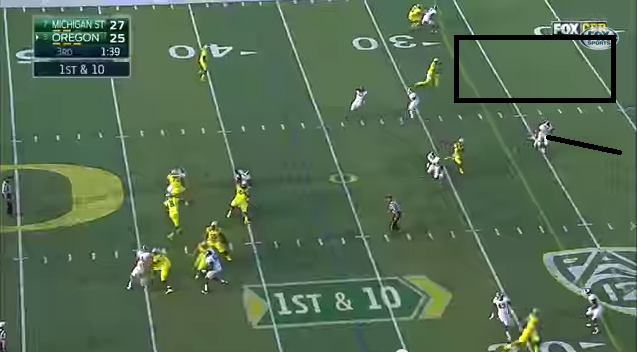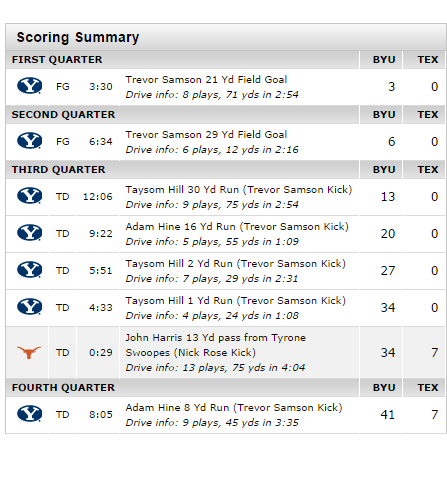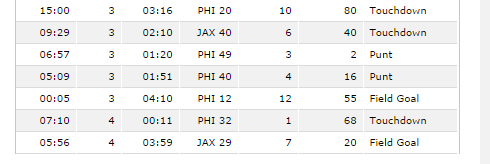- Belicheck
- Cowher
- Dungy
- Landry
But, in principle, we learned that perhaps more defensive head coaches (and offensive head coaches, for that matter) should take a cue from what is working; if one is to feature a power running game, the way to maximize an offense's potential to break a defense is through the use of tempo. Just this weekend, we were given three major examples of this:
Michigan State at Oregon:
In a truly great matchup, an outstanding defense simply could not keep pace with the balance and tempo that Oregon presented. On the go-ahead touchdown, Oregon catches MSU spinning to an 8 man front (resulting in 1 high safety), leaving the defense vulnerable to the "4 Vertical" pattern that results in the score.
After intercepting a pass in the end zone just before the half, the Texas Defense had given up 2 field goals at the midway mark. The box score, however, reveals the inability of the Texas Offense to keep the ball for any time, allowing to Cougar offense to hammer away at the Horns. This wasn't the 1980's BYU offense that passed on virtually every play; BYU had 59 rushing attempts to go along with 27 pass attempts - numbers only reached in an uptempo mode.
The snapshot of the Eagle's second half drives who the ability to remain balanced. With the exception of the 68-yarder in the 4th quarter, each was a mixture of runs and short passes. Even the big play was delivered off of play action. Again, the key is the ability to give the defense a 2-dimensional threat.
While there are adjustments made during intermission, coaches know the "halftime adjustment" moniker that has overrun TV and radio broadcasts is not what it is portrayed in the media. Certain elements of the existing game plan are emphasized, and while there are "tweaks", wholesale changes that have not been practiced simply do not happen.
What happened in these three cases is this: good defenses simply could not hold up to the offensive barrage. Michigan State's defense was lauded as the nation's finest, and still might be. Texas' defense only gave up 6 first half points, despite being put in bad situations. The Eagles were able to create more opportunities for themselves because of the nature of their attack.
Operating from a no huddle environment allows the offense to be MORE physical because they can call more downhill runs while still making the defense honor the pass, giving them more opportunities to test the soundness of each play. Anyone whose ever coached can realize HOW CLOSE every play is to being a big gain for the offense; simply giving the offense more chances to give playmakers the ball AND punish the defense physically also simplifies the defense for the offense.
There are very few reasons why an offense should play a grinding, low-output style of offense; the refusal to accept change simply is not one of them.






 RSS Feed
RSS Feed
